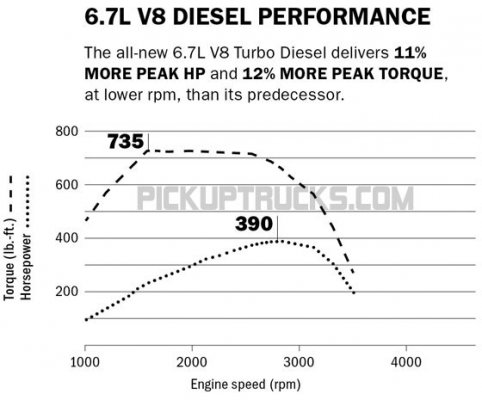Torque-less wonder without boost. Gas *hog* with boost. What's the point of a boosted V6 again?
...that you don't need 300+ ft/lb to maintain cruising speed, so why burn the fuel to make power that you don't need?
The area of the power curve where there's low torque is between idle and 2100 or so... and if you're spending a significant amount of time in that part of the tach, you're not using the truck aggressively. If you ARE using the truck aggressively, you'll be out of that part of the rev range soon enough.
If you watch the TFL Truck vid of the 0-60 runs, the truck doesn't seem to have much trouble coming "on to" the motor under heavy acceleration (granted, it IS unloaded acceleration); I expect that most of the, say, 1400 RPM "dead zone" (between an assumed idle speed of 700 RPM and 2100 RPM where the HO 3.5L surpasses the torque of the 6.2L) is eaten up by the flash stall speed of the converter. Hell, I'd be willing to bet that it's damn near the same case with the existing 6.2L trucks (again, under WOT conditions). Under cruising conditions, I can see an advantage for the 6.2L trucks if, for some reason, you didn't want to allow the transmission to downshift. However, personally, even in V8 powered vehicles (granted, I have never driven a 1st gen Raptor), I want them to downshift when accelerating from cruising speed (say, moving from a 50 mph zone to a 75 mph zone), as there's just not enough ass below 2k RPM to give me the acceleration that I want. Add in the tighter gear spacing (and faster shifts) of the 10 speed, and if I had to guess, even accelerating from cruise speeds will favor the new truck. In regard to fuel consumption, high load/low RPM (the only place the 6.2L has an advantage) is a mileage (and engine) KILLER.





